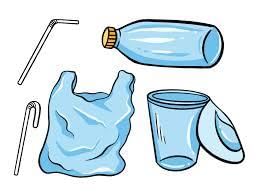Class 5 Exam > Class 5 Notes > Year 5 Science > How to identify materials
How to identify materials | Year 5 Science - Class 5 PDF Download
Types of Materials
Materials possess various properties that make them suitable for different purposes.
Metals
- Metals are robust, durable, and lustrous materials that can be shaped through hammering without fracturing. They conduct heat and electricity effectively and some exhibit magnetic properties.
- These properties make metals valuable in the creation of items such as cutlery, saucepans, automobiles, and coins.

Plastics
- Plastics, synthetic materials produced from chemicals, do not occur naturally. They are sturdy, impermeable to water, and can be molded into various forms through heat application.
- Unlike metals, plastics are insulators, meaning they do not conduct heat or electricity. Additionally, they are non-magnetic.
- Plastics find applications in the production of items like bags, bottles, and toys.

Glass
- Glass is produced by melting sand and minerals at high temperatures. It is transparent and can be shaped into various forms.
- While thick glass is durable, thin glass is fragile. It is commonly used for transparent applications like windows and eyewear.

Wood
- Wood is derived from trees and is known for its strength, flexibility, and longevity.
- It serves as an insulator for both heat and electricity. Wood is extensively utilized in crafting furniture and other items.

Fabric
- Fabrics Overview: Fabrics are crafted from thin fibers intricately woven together to create versatile materials.
- Properties of Fabrics: Different fabrics possess distinct qualities; they can be stretchy like a pair of tights, insulating as seen in a woollen coat, or absorbent such as a towel.
- Utility of Fabrics: Fabrics serve as the primary raw material for clothing due to their flexibility, warmth, and durability.
- Understanding Absorbency: Materials that can soak up or absorb liquids are termed absorbent materials.
- Examples of Absorbent Materials: For instance, towels are designed to efficiently absorb water due to the absorbent nature of the fabric.

Question for How to identify materialsTry yourself: Which material is known for its insulating properties for both heat and electricity?View Solution
Properties
Properties are characteristics that describe how a material behaves and why it is suitable for specific uses. They help us understand the qualities of different materials.
Let's explore some common properties:
Hardness
- A material is considered hard if it is difficult to scratch. For instance, metals like steel are hard and resist scratching. Think about trying to scratch a metal pair of scissors.

Solubility
- A substance is soluble if it can dissolve in a particular liquid, often water. For example, common table salt and sugar easily dissolve in water, while substances like sand are insoluble and do not dissolve.

Transparency
- Transparency refers to the ability of a material to allow light to pass through so that objects behind it can be seen. Glass is a common example of a transparent material. The opposite of transparency is opacity, where light cannot pass through the material.

Good electrical conductors
- Metals and graphite are excellent electrical conductors as electricity flows through them easily. On the other hand, plastics and glass are poor conductors and are known as electrical insulators.

Good thermal conductors
- Metals are efficient thermal conductors as heat passes through them easily. In contrast, fabrics are poor thermal conductors, leading to insulation properties.

Magnetic Properties
- Specific metals such as iron and steel exhibit magnetic properties as they can be attracted to a magnet.

The document How to identify materials | Year 5 Science - Class 5 is a part of the Class 5 Course Year 5 Science.
All you need of Class 5 at this link: Class 5
|
19 videos|34 docs|12 tests
|
FAQs on How to identify materials - Year 5 Science - Class 5
| 1. What are the different types of materials based on their properties? |  |
Ans. Materials can be classified into categories such as metals, ceramics, polymers, and composites based on their properties.
| 2. How can one identify the type of material based on its properties? |  |
Ans. Materials can be identified by conducting tests such as measuring their conductivity, hardness, density, and other physical properties.
| 3. What are some common properties of metals? |  |
Ans. Metals typically have high conductivity, malleability, ductility, and strength, making them suitable for various applications.
| 4. What are some examples of ceramics and their properties? |  |
Ans. Ceramics like porcelain and glass have high hardness, brittleness, and resistance to high temperatures, making them ideal for use in kitchenware and construction.
| 5. How do polymers differ from metals and ceramics in terms of properties? |  |
Ans. Polymers have lower strength and stiffness compared to metals and ceramics but offer advantages such as flexibility, low density, and corrosion resistance.
Related Searches















